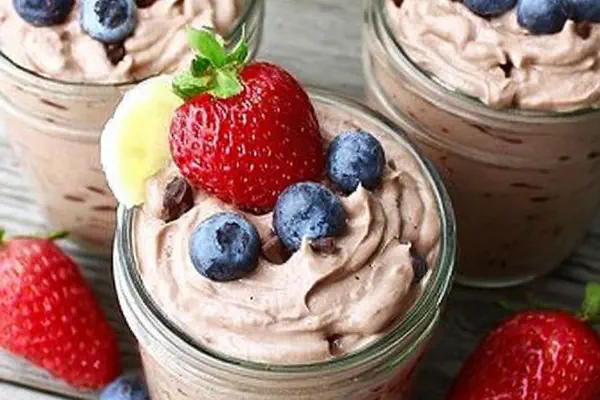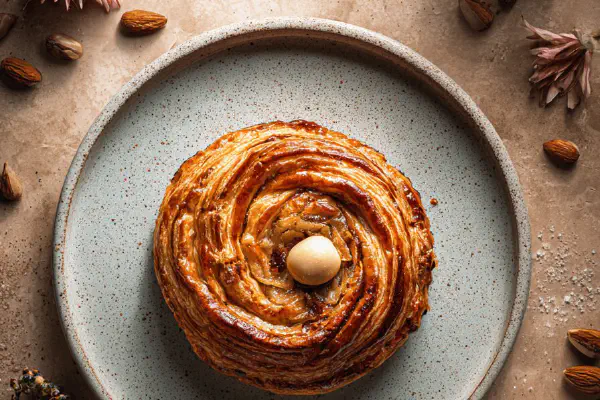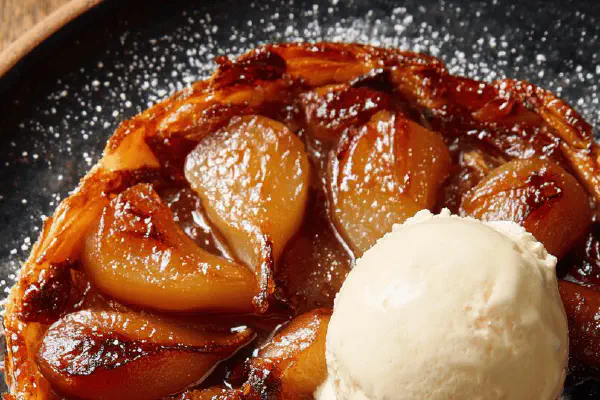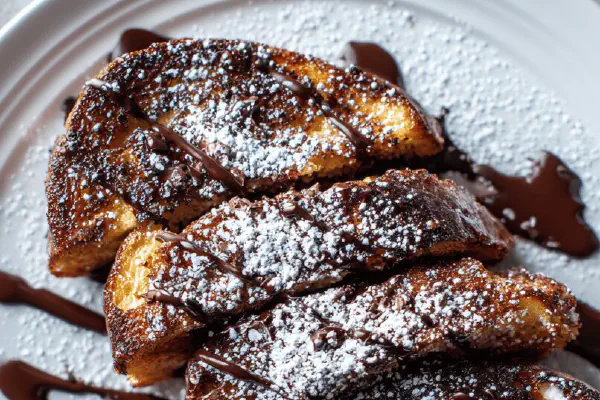Featured Recipe
Chilled White Chocolate Coffee
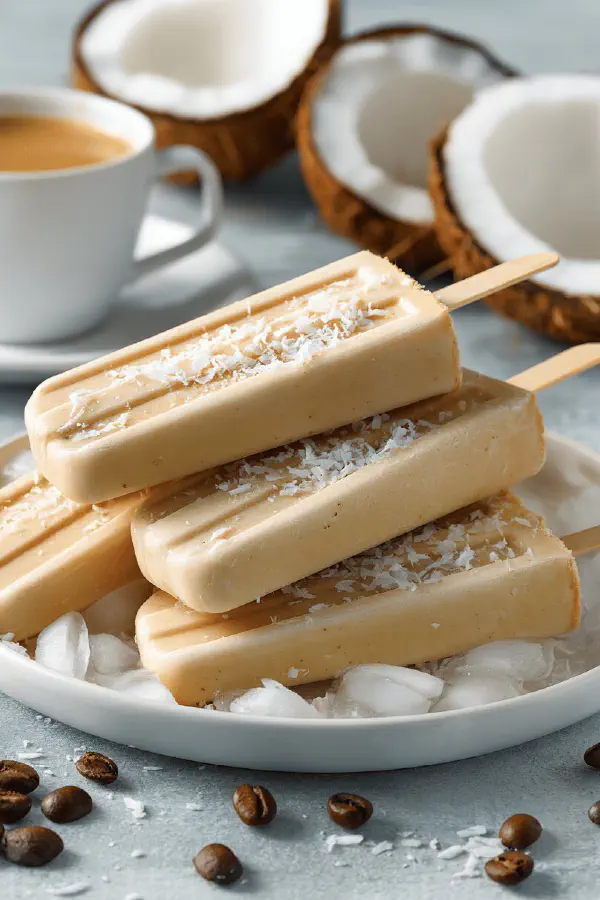
By Kate
"
Espresso or strong coffee blended with white chocolate and a splash of hot water, frozen into creamy chilled servings. Adjusted with less chocolate and added vanilla bean paste for aromatic depth. Coconut cream replaces espresso crema for a richer texture and subtle tropical hint. Frozen on sticks for easy sipping. A quick freeze then longer solidification ensures proper texture without icy hardness.
"
Prep:
12 min
Cook:
15 min
Total:
27 min
Serves:
4 servings
coffee
dessert
frozen treat
French cuisine
Introduction
Coffee sharp, white chocolate sweet; contrast that mix catches the tongue fast and holds. Don’t just melt and freeze—observe texture and temper chocolate properly. You want creamy thaw, not icy slab. Coconut cream added not just for flavor but for body — stabilizes and smoothes freeze, prevents cracking ice crystals. Vanilla bean paste instead of plain extract gives real aroma punch without bitterness of synthetic vanilla. Quick pulse in blender melts chocolate evenly while beating air for lighter finish. Stir sticks make serving practical—a frozen sip, stirring as needed to soften mid-drink. Freeze timing critical: first half sets edges to trap air, avoid frost bloom; second half solidifies just right without over-freezing. Visual cues count here; gloss on surface means melting done right; dull or grainy means reheating or blend too hot. Cold but inviting. Few ingredients, no eggs, gluten-free, nut-free but layered flavors. Ideal for last-minute cooling down or unexpected guests. Always scout for uneven melting in chocolate and adjust power settings on blender; grinding too long heats mixture past ideal. If white chocolate too sweet, try bittersweet or add pinch fine sea salt for balance. Vanilla optional but worth it. Coffee quality matters — fresh brewed espresso or strong cold-brew concentrate. Aim for rich aromas, not diluted.
Ingredients
About the ingredients
Switched up quantities to reduce sugar load and highlight coffee. Using less chocolate enhances espresso’s bitterness. Coconut cream replaces anything dairy, introducing fats that stabilize freezing and add smoothness. Vanilla bean paste delivers natural, intense vanilla notes without artificial aftertaste. Chocolate white in chunks melts better than chips; milky white chocolate holds moisture better freezing. Hot water dilutes espresso to suitable strength and aids chocolate melting. Wooden sticks not just decoration—help mixing when semi-frozen. Beans from single origin coffee deliver cleaner espresso flavor; if unavailable use strong cold-brew concentrate, adjusting water accordingly. If allergic to coconut cream, substitute with heavy cream or oat cream but expect subtle flavor shift and less coconut aroma. Avoid boiling coffee; just hot enough to melt chocolate and maintain coffee oils intact. Changing chocolate texture drastically affects mouthfeel; test melting carefully. If mixture too thick, add small splash more hot water, no more than 10 ml, to loosen. Avoid freezing in deep molds; shallow cups or ramekins freeze more evenly and defrost faster. Frozen drinks lose aroma fast; serve promptly.
Method
Technique Tips
Emphasize timing and inspection over clocks; texture key. Melt chocolate within coffee carefully; overheating ruins sheen, turning chocolate grainy. Blend paused for inspection avoids burning or seizing. Even pour into molds prevents thick spots that freeze unevenly and disrupt mouthfeel. Insert sticks deep enough to anchor but avoid stirring once freezing starts or texture will break down. Early freeze stage traps air pockets that soften frozen result; don’t ignore first 10 minutes—essential for texture foundation. Finish freezing to firmness, but not rock hard. Overfreeze and white chocolate fat recrystallizes, causing sandy texture. Check at edges for frost halo; slight frost okay but no hard ice. Thaw briefly before serving; helps unmold and enhances aroma release on palate. Cocoa or shaved chocolate garnish adds contrast but don’t overdo. Store leftovers tightly sealed; white chocolate picks up fridge odors quickly. If mixture separates after freezing, next time try slightly more fat or less water for stability. Remember: strong espresso, quality chocolate, proper temperature, timed freezing. No shortcuts. Consistency comes from watching and tasting, not just timing minutes.
Chef's Notes
- 💡 Heat espresso until just steaming. Don’t boil; coffee oils matter, keep the aroma strong. Integrate with chocolate quickly for best melt. Coconut cream versus dairy—a must, richer texture.
- 💡 Use white chocolate chunks—chips don't melt as well. Adjust time in blender carefully. A quick pulse is best, avoid overheating. Mixture should be glossy. Dull means trouble.
- 💡 For best texture, opt for shallow molds. They freeze faster and more evenly. Ice crystals ruin quality. Don’t rush the freeze process; timing matters. Watch edges for that slight frost—ideal.
- 💡 If overly sweet, add fine sea salt. Balances the flavors. Espresso needs to shine through, adjust chocolate amounts if too dominant. Difficult to recover if mishaps happen—stay attentive.
- 💡 Unmold with care. Let sit at room temperature briefly. Helps loosen. Garnish but don’t overpower. Cocoa powder or white chocolate shavings can enhance presentation.
Kitchen Wisdom
How to ensure smooth melting of the chocolate?
Heat espresso enough to melt without boiling. Watch closely; overdoing it ruins texture. Blend quickly for even mixing.
What to do if the mix becomes too thick?
Add a little hot water—no more than 10 ml. Keeps it loose, helps the chocolate blend smoothly. Adjust right away.
How to properly store leftovers?
Seal tightly; white chocolate absorbs odors easily. Keep in fridge. Will last a few days. But try not to freeze again for quality.
If the mixture separates after freezing, what’s wrong?
Too much water; next time, add extra fat. It stabilizes. Check blending times carefully for best results.
